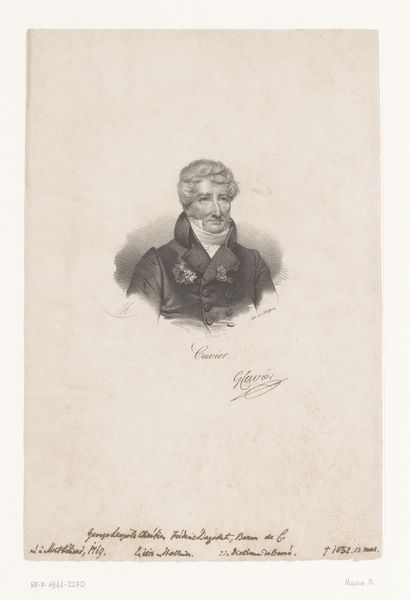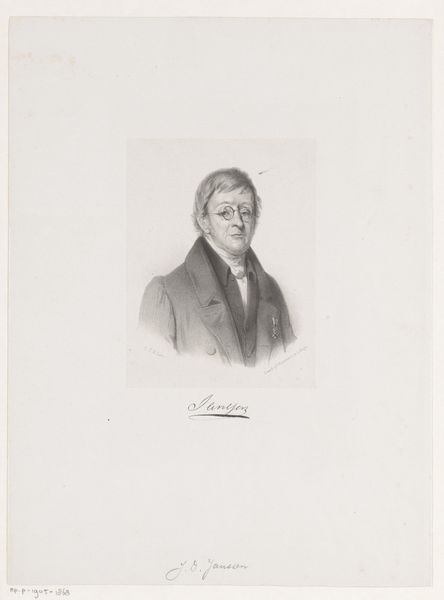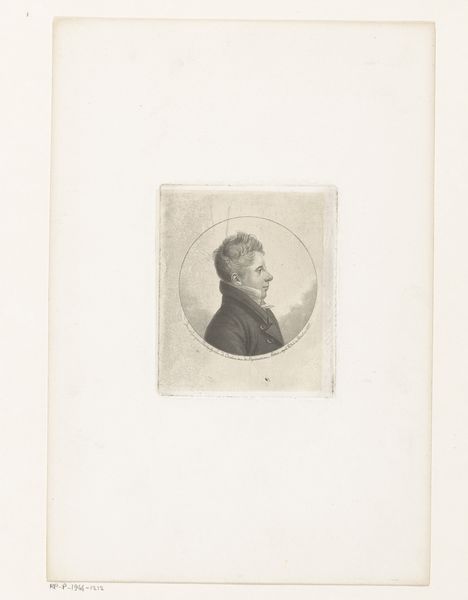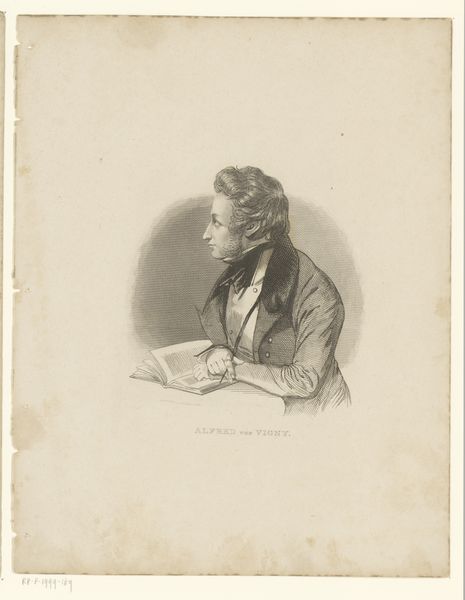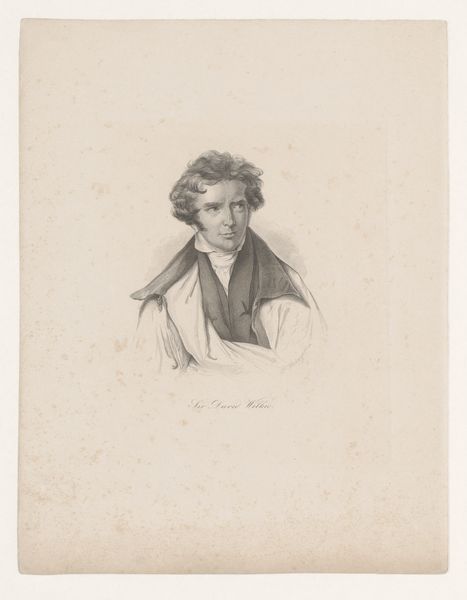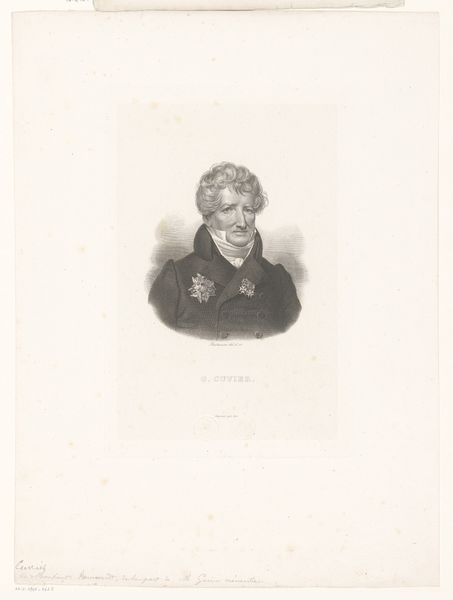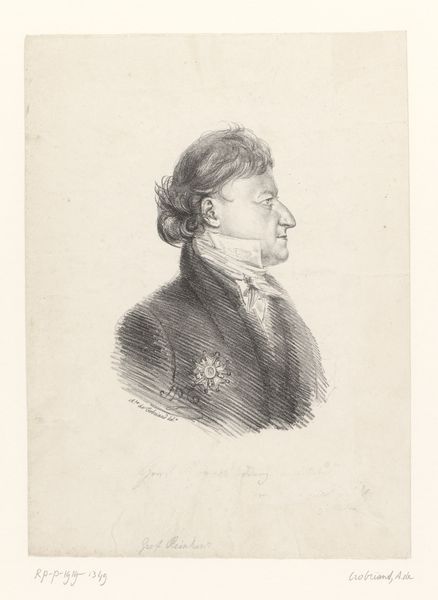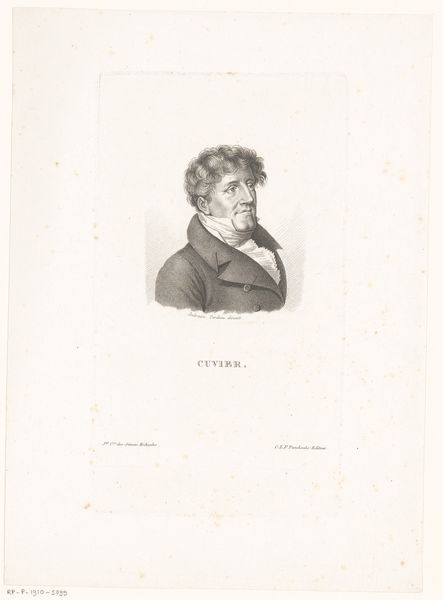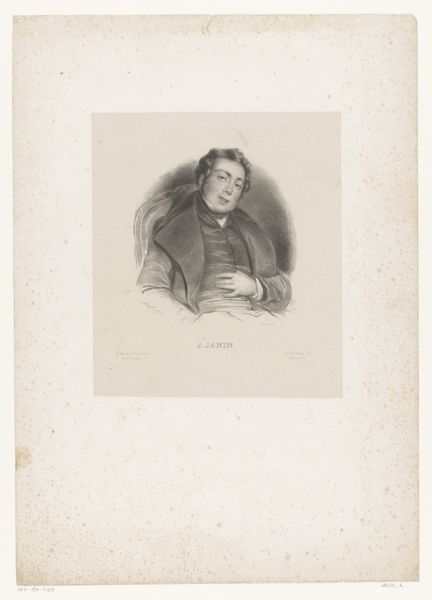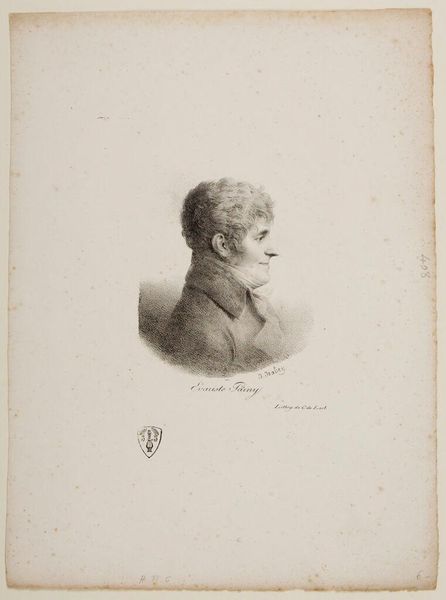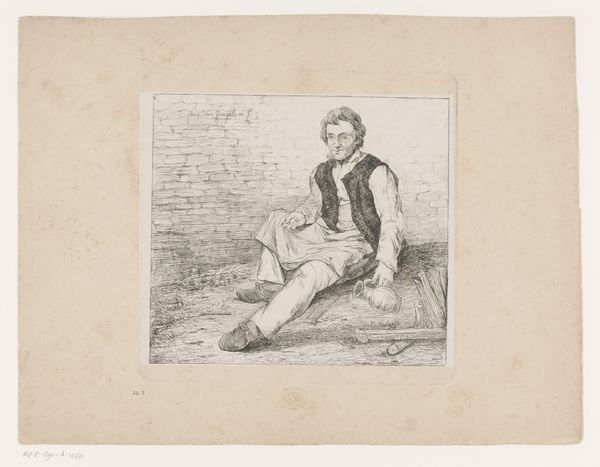
engraving
#
portrait
#
neoclacissism
#
caricature
#
pencil drawing
#
portrait drawing
#
academic-art
#
engraving
Dimensions: height 358 mm, width 272 mm
Copyright: Rijks Museum: Open Domain
Editor: This is Nicolas Maurin’s "Portrait of Georges Cuvier," created sometime between 1825 and 1842, using engraving. The portrait feels very formal and classical, but something about his expression seems almost… sly? What do you see in this piece beyond just a straightforward depiction of a historical figure? Curator: I see a representation deeply embedded in the politics of scientific authority and the male gaze. Cuvier, a prominent scientist, is deliberately presented in a manner that asserts dominance and control. The neo-classical style, with its emphasis on reason and order, reinforces this idea. What power structures do you think are at play here? Consider the intended audience and the message being conveyed. Editor: I hadn't thought about it in terms of asserting power! I suppose his attire and decorations do signal a certain status, but I mostly saw a serious, almost stern depiction of a scientist. Curator: Exactly. The sternness can be read as a performance of authority. But consider also the context: post-revolutionary France, the rise of scientific institutions, and the construction of masculine ideals. His gaze isn't just stern; it's an assertion of knowing, of seeing. What might be occluded or excluded by such a gaze? Editor: Hmm, I guess it makes me wonder about whose stories *aren't* being told in this era. If this is the image of a powerful, knowing man, what about the women or marginalized communities whose knowledge and perspectives weren't valued? It sort of casts a shadow. Curator: Precisely! This portrait isn't merely an image; it's an active participant in constructing and perpetuating certain power dynamics, revealing the inherent biases within scientific and artistic representation. Editor: That definitely shifts how I see it. I was focused on the individual portrait, but it's much bigger than that. Thanks for making me consider those broader narratives. Curator: And thank you for seeing that power in visual representation is never neutral. There is so much that is told but untold in works like this one!
Comments
No comments
Be the first to comment and join the conversation on the ultimate creative platform.
